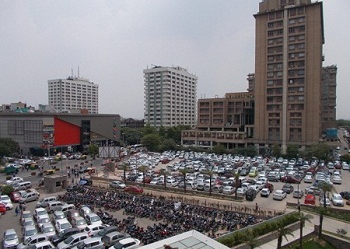
Uploaded on 2016-08-25 by Srijanaa
2. UHI effects in Delhi. A study done by Delhi-based Energy and Resources Institute (Teri) shows that temperatures in Delhi have risen by 2C to 3C in last 15 years. The ongoing study, based on Nasa satellite readings, also shows Delhi to be 5C-7C warmer than in the surrounding rural areas on summer nights. This phenomenon is recognised as a direct consequence of urbanisation, due to which Delhi has more than doubled in size and population in last 25 years. The heat spots coincide with market areas, business centers and educational hubs which cater to a vehicular movement and resulting traffic congestion. Comparing the data from two weather stations within Delhi, namely Palam and Safdarjung, variation were observed by Manjun Mohan in her study of "Urban Heat Island Effect over National Capital Region of India: A Study using the Temperature Trends". She believes that fast urbanisation and unplanned growth is the reason for it. Other reasons that lead to UHI effect in Delhi and similar cities are : Extensive built-up, lack of green-water scapes in the city, Reduced plantation along roads/pavements, dependence on private transport leading to increased traffic, congestion and pollution, use of air-conditioning systems to achieve comfort in harsh climates, use of building materials like glass-concrete-steel which trap heat, etc. 3. Proposed Measure. The measure that can be taken are: a. Improving connectivity through Public transport b. Enhance walkability through shaded pathways or system of green spaces c. Planning must take into account built up to green space ratio. d. Water bodies and city greens to be protected. e. Use of glass in construction especially in the climates similar to Delhi must be limited. f. Buildings must be designed based on natural wind patterns and sun-movement to reduce dependence on mechanical air conditioning. g. Urban design and planning must take into account suitable urban forms and urban massing for effective air circulation and avoid trapping heat. 4. Policies to reduce UHI effect. Steps that have been taken in Delhi are: a. Strengthening of public transport (BRTS, Metro Rail) to reduce traffic issues on road. Also, recently an odd-even rule to limit cars on road was implemented in Delhi on trial basis. b. Urban Plantation drives are initiated by NGO's. c. Initiatives are being taken to decongest CBD areas of traffic and parking by promoting walkability through street design and enforcing parking in peripheral areas. More policies can be added to above list but the only issue that makes results un-achievable is poor implementation.